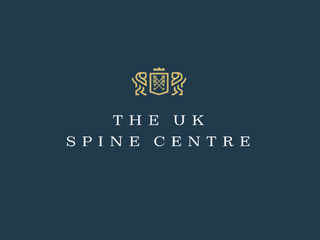
Your Google Ads account is set-up, your campaigns have been created and your PPC ads are live. So now what? It won’t be long until you start to see your numbers grow. At this point, you need to know what the numbers mean so you can get the best from your PPC ads and investment.
We’ve put together a list of six key metrics that are the most important when judging the success of your PPC campaigns. Whether you’re getting to grips with running your PPC activity or you’re wading through a report full of numbers from your advertising agency – this is the guide for you.
1. Click-through-rate (CTR)
Click-through-rate or CTR allows you to understand how engaging your ads are. Calculated by dividing the number of times your ad was clicked by the number of impressions your ad received (counted each time your ad is shown on a search result page) and given as a percentage.
The more engaging the ad or call-to-action, the higher the CTR. This metric should be used when altering and testing new ad copy. Helping you to understand how relevant a keyword is to those searching for your product or service. This metric is also a key influence on quality score, a score given between 1 and 10 by Google to show how relevant they believe your ads are.
2. Cost-per-click (CPC)
Cost-per-click is exactly what it says, how much it costs you each time your ad is clicked. There are two types of CPC, average CPC and max CPC. That’s a lot of abbreviations, we know.
Average CPC is the average amount that you’ve been charged for a click on your ad. Calculated by dividing your total campaign cost by the number of clicks that were generated. Next up is Max CPC, every keyword or ad group (depending on your bidding granularity) requires a Max CPC. This is the highest amount that you’re willing to pay for a click on your ad. You will only ever pay £0.01 more than the highest bid in the auction. So, if you have set a Max CPC of £2.00 but your highest paying competitor only has a Max CPC of £1.90, you can expect to pay £1.91.
Of course, appearing in top positions is not as simple as having the highest bid. Google wants to ensure the ads that appear on the search results page are of the best quality. They judge a campaign on many other factors than the bid including CTR, quality score and account optimisation score.
3. Impression Share (IS)
Impression share is the percentage of impressions that your ad received compared to the total number of impressions that your ads could have received. Given as a percentage, this is a key way of understanding how much of the auction you are occupying compared to your competitors. Impression share is a good way to understand whether your ads might reach more people if you increase your bid or overall budget.
As a rule, an impression share of 80% or more is considered strong. Using Google’s auction insights you can understand if you have lost impression share due to budget or rank. This allows you to decide if you need to increase your budget or optimise your ads and keywords.
4. Optimisation Score
Optimisation score is an estimate of how well your Google Ads account is set to perform. The score runs from 0% to 100%, with 100% meaning that your account can perform at its full potential. This metric is becoming increasingly important in 2020 and a contributing factor in how agencies gain partner status from 2021.
Along with the score, you’ll see a list of recommendations that can help you optimise each campaign. Many of these recommendations focus on the adoption of Google tools such as Smart Bidding, Smart Shopping and Dynamic Search Ads. Many marketers feel this is removing the ability to use third-party tools and forcing users to adopt Google’s products. Regardless of your opinion, this is an important metric to consider to create strong performing campaigns.
5. Conversion Rate
Conversion rate is an important metric for any type of paid activity, from transactional to lead generation. Conv. rate calculates the number of conversions or actions generated by each click. As expected, the higher the conversion rate the stronger the performance of the PPC campaign. When optimising keywords, conversion rate should be viewed. It is also an important metric when forecasting future performance.
Reviewing keyword performance and the customer journey is important when optimising to improve this metric. There are also many on-site factors that influence conversion rate and so it’s important that you focus on user experience once a user reaches the site.
6. Return-On-Investment (ROI)
Return-On-Investment is undoubtedly the most important metric within any marketing activity (not just PPC). Knowing the ROI of your marketing activity is essential in understanding how profitable your investment is and where tweaks and changes need to be made. Whether you use PPC to increase sales, generate leads, or drive other valuable customer activity, ROI can help you to judge success. We’ve seen businesses calculate ROI in many different ways, but the most common way is:
(Revenue – Cost of goods sold) / Cost of goods sold
Anything over 100% is profitable, anything below 100% requires some attention. Every digital marketer should know the efficiency of the activity they are running.
Summary
When viewing any set of data it is important to make sure the date range is robust. If you are hoping to see a 1000% ROI after one day of PPC activity, it’s very unlikely. Decide on clear review points following the launch of your campaigns and always ensure the goal of the activity is clear. If you aim to grow brand awareness, then conversion rate is not the metric to use to judge success, impressions and reach would be more suited.
At Green Ginger, we live and breathe numbers. We know this isn’t for everyone and so we tailor our reports depending on the level of detail you want. If you need PPC support for your business or would like to understand if you are getting the most out of your activity – get in touch!
We’d be happy to do a free audit of your accounts and support your business to reach its full potential.














